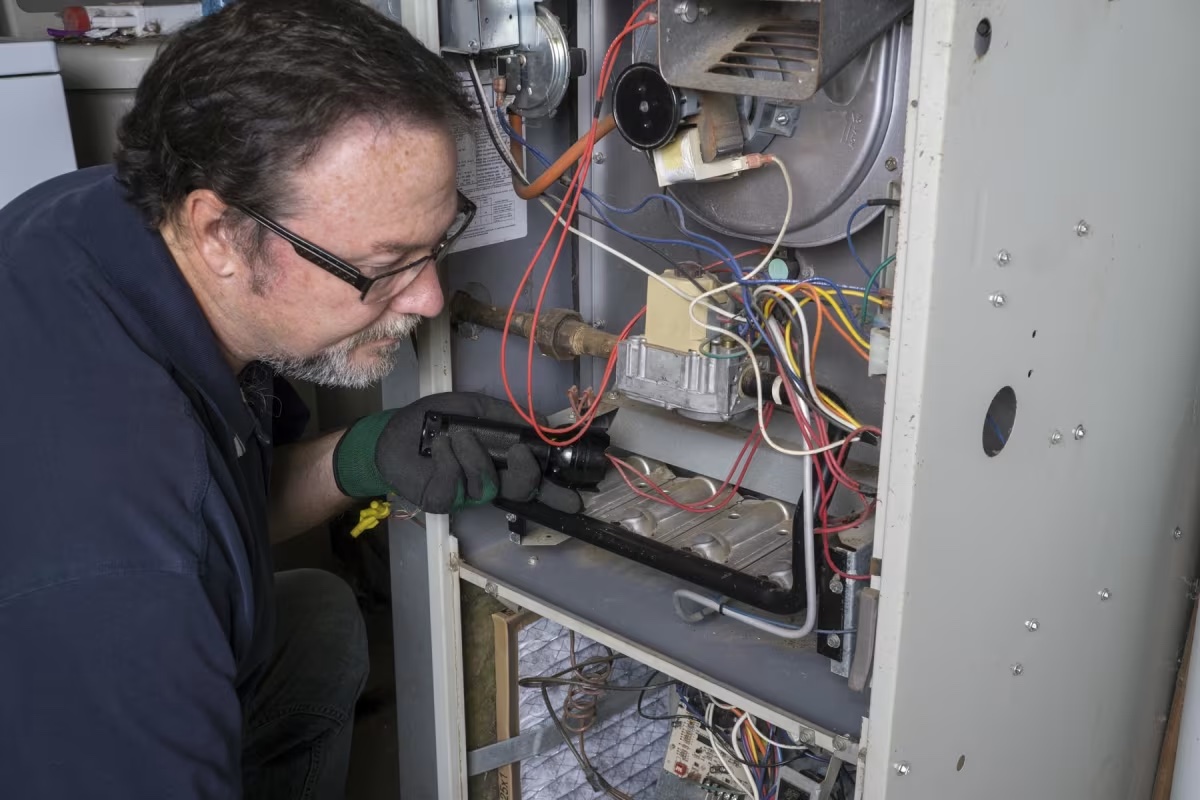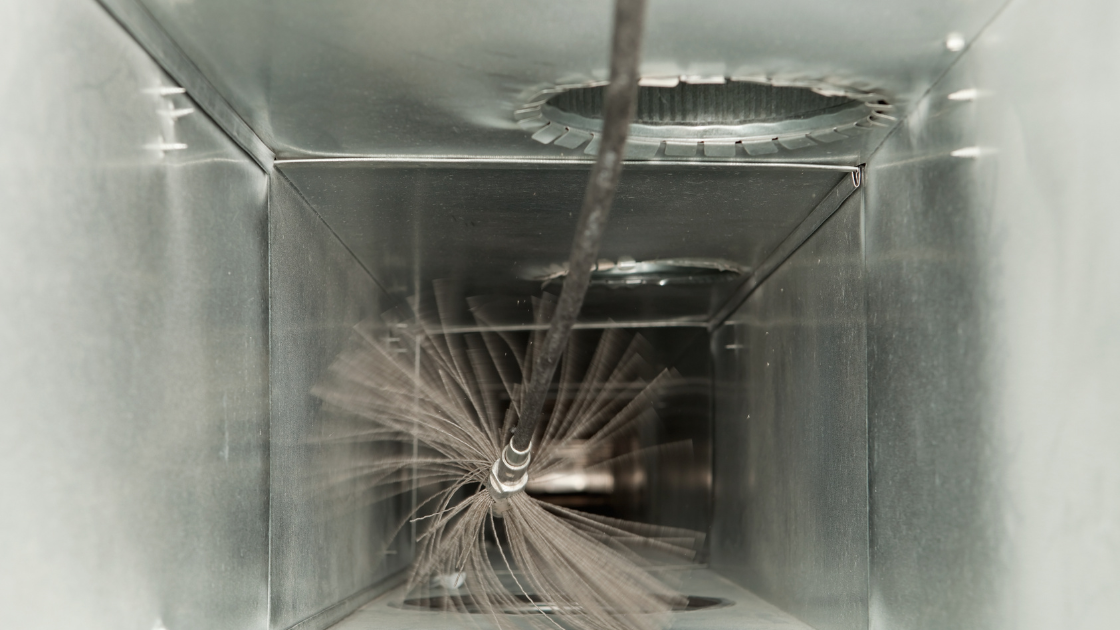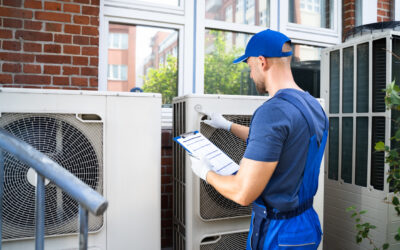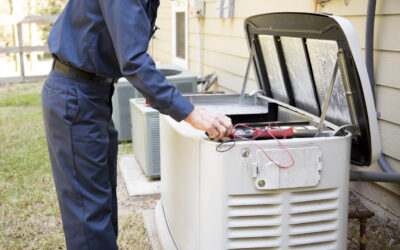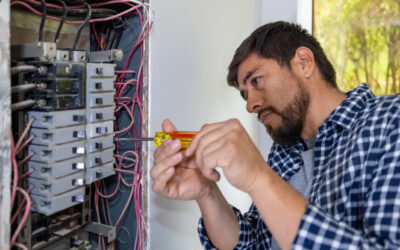As winter swiftly takes hold after an extended summer, your furnace becomes the household hero in no time. Immediate recognition of furnace issues becomes paramount for maintaining a warm and comfortable home. Ensuring the continuous warmth of your abode is a blend of regular maintenance and the ability to identify symptoms of common furnace problems.
Empower yourself today by delving into the intricacies of troubleshooting furnace issues. Stay cozy and well-prepared for the colder months by staying informed about heater problems and addressing them promptly.
What are the most common furnace problems homeowners can encounter?
As with many HVAC systems, whether you’re a homeowner or a business owner, you’ll encounter heater problems, and normally when you least expect them. When you’re looking to troubleshoot a malfunctioning furnace, it’s important to know what to look for and fix what you can before calling an HVAC professional.
The most common furnace problems are:
Let’s dive into what these furnace issues are and how you can repair your furnace to get it back in working order.
Airflow Issues
Airflow issues frequently contribute to furnace problems, as dirty ductwork and clogged filters impede the smooth circulation of air. These impediments force the furnace to work harder, leading to strain on components and potential malfunctions. Addressing airflow problems is crucial to maintain efficient heating and prevent further complications in your furnace system.
Dirty ductwork
While seemingly straightforward, the importance of this repair cannot be overstated. Periodically, dust and debris find their way into your heating ducts, causing a restriction in the flow of hot air. If you’ve observed a decline in your furnace’s heating efficiency, it might be time for a ductwork cleaning session.
Ensure smooth airflow by checking the vents manually and, for long-term prevention, consider enrolling in a routine maintenance plan with a trusted HVAC technician. This proactive approach includes thorough ductwork and HVAC system cleaning to keep your heating consistently operational.
Old filters
Discover the unsung hero of your furnace – the filter that not only keeps your air clean but also maintains the cleanliness of your ductwork. Acting as a barrier against dirt, allergens, pollutants, and airborne hitchhikers, your filter plays a crucial role. However, many homeowners are unsure about the frequency of filter replacement. Generally, most filters should be replaced every month or two, depending on the specific type. For a more accurate timeline, refer to the packaging of your filter.
If your furnace is exhibiting reduced heating efficiency, it might be a sign that your filter is due for a change. The strain on your furnace, noticeable when it works harder than usual, could be a result of a clogged filter impeding proper airflow. Learn more about maintaining optimal furnace performance in our blog: How Often Should I Replace My Air Filter?
How Often Should I Replace My Air Filter?
We are sharing some tips to keep your home HVAC air filter up to date, so your heating and cooling system runs better and lasts longer!
Broken blower components
Within your furnace lies a vital blower mechanism responsible for circulating heated air into the ducts, ensuring your home stays warm and cozy. Picture it as the engine that propels warm air into the ducts, allowing it to reach every room and provide the desired level of comfort. The blower consists of various components, including a motor and fan, working together to ensure the efficient circulation of heated air. If the blower malfunctions or encounters issues, it can result in a lack of warm air reaching your living spaces, prompting the need for inspection and potential repairs by a professional HVAC technician.
Common blower components that cause furnace issues are:
- Blower Bearings: Over time, ball bearings in the blower mechanism can develop wear and tear. Signs of a problem include a scraping sound from your furnace.
- Blower Belt Issues: A high-pitched squeal from the furnace signals a problem with the blower fan belt. The belt may slip out of place, requiring adjustment by an HVAC technician. Over time, wear and tear can lead to belt breakage, impacting furnace efficiency and necessitating replacement.
- Damaged Blower Capacitor: The capacitor powers the blower motor, acting like a battery. Damage to the capacitor can lead to power surges, tripping the breaker or causing a short circuit. A malfunctioning furnace that starts but stops midway may indicate a damaged blower capacitor, requiring inspection and potential replacement by an HVAC professional.
Ignition and Starting Problems
Ignition and starting problems, often identified as the most common issues, play a pivotal role in causing furnace malfunctions by directly affecting the system’s ability to generate heat. Whether it’s a malfunctioning ignition system or a faulty ignitor disrupting the essential spark for combustion, these issues can leave the furnace unable to produce the warmth your home needs. Swift attention to ignition and starting problems is paramount for maintaining the consistent and reliable operation of your furnace.
Faulty starting mechanism
Within each furnace lies a unique mechanism designed to initiate the heating cycle, with the specific type depending on the furnace model. While older furnaces commonly feature a pilot light, modern counterparts opt for electrical ignitions.
Does My Gas Furnace Have A Pilot Light?
Do you have a modern gas furnace or is yours an older model? Learn the differences between the two and if your gas furnace has a pilot light or not here.
Irrespective of your furnace’s design, issues with the ignition or pilot light can arise, necessitating either replacement or repair. A malfunction in these components may lead to your furnace failing to turn on and heat your home as expected.
Whether or not the pilot light is visible within the furnace, if your heating system fails to turn on as expected, reaching out to an HVAC technician is a prudent step to address any potential issues.
Malfunctioning heat exchanger
While it might not be a household term, your furnace’s heat exchanger is a crucial component for maintaining a warm home. Comprising a coil of heated tubes, it plays a pivotal role in heating the air before distributing it throughout your living spaces.
Given the substantial heat handled by these tubes, regular furnace maintenance becomes imperative to prevent issues like cracking or malfunctions. If neglected, the need for heat exchanger replacement may arise, a costlier repair but a more economical alternative to purchasing a new furnace. Keep an eye out for signs such as lukewarm air from your vents, indicating potential heat exchanger problems.
Signature Service Plan
Our Signature Service Plan is a customized maintenance plan designed to offer you regularly scheduled inspections of your current heating and cooling system. Not only does this plan provide you the peace of mind that your system is operating efficiently, providing both energy savings and repair cost savings, it is also tailored to meet the specific needs of your home’s equipment – thus extending the life of your system for a reasonable cost.
Bad Limit Switch
Integral to your furnace’s optimal performance and your safety, the limit switch is a critical component that not only ensures efficient operation but also prevents potential hazards. By detecting the furnace’s internal temperature, the limit switch instructs the blower fan when to activate or deactivate. Beyond regulating the blower fan, it serves as a crucial safety feature, automatically shutting off the furnace’s burners if temperatures reach a dangerous level, preventing fires and severe damage.
An indicator of a malfunctioning limit switch is a furnace that continues to run continuously when it shouldn’t. While seemingly innocuous, this issue can expose you to potential dangers, as the limit switch fails to intervene in overheating situations. In such instances, it is advisable to contact an HVAC technician promptly for a thorough inspection and potential repair or replacement of the limit switch.
Electrical and Control System Issues
Electrical and control system problems with the thermostat, circuit breaker, or other control components can disrupt the seamless operation of the furnace. Recognizing the signs, such as irregular heating patterns or unexpected shutdowns, is crucial for homeowners to promptly address these issues and ensure the efficient functioning of their furnace.
Thermostat in need of repair
Sometimes, the root cause of furnace issues lies beyond the furnace itself. Your thermostat, responsible for detecting and communicating the temperature in your home, plays a pivotal role in initiating heating cycles. A malfunctioning thermostat can misinterpret room temperatures, leading to unnecessary heating or inadequate warmth. If your thermostat encounters issues with message transmission to the furnace or faces electrical system problems, it’s crucial to address these concerns promptly.
An HVAC technician can thoroughly inspect your thermostat, identifying software or hardware issues, and either restore its functionality or replace your home thermostat with an upgraded, energy-efficient one.
Tripped circuit breaker
Encountering a tripped circuit breaker in your furnace can often be attributed to a momentary power surge, easily resolved by a simple breaker reset. If this quickly restores the system’s functionality, all is well. However, persistent tripping warrants attention and investigation.
It’s possible that your furnace shares a circuit with other high-powered electrical appliances, leading to overloads. Alternatively, internal ground faults might be causing an influx of energy.
To troubleshoot this seemingly straightforward issue, consider isolating the furnace on its own circuit or separating its circuit board. While exploring these simple steps can assist in identifying and resolving the root cause of the circuit tripping, it’s essential to note that handling electrical components may require the expertise of a qualified electrician. Ensuring the seamless operation of your furnace may involve seeking professional assistance to implement these adjustments safely and effectively.
Safety and Operational Concerns
Unexpected noises and gas leaks/odors are common concerns that can impact the safety and operation of furnaces. Unusual sounds often signal underlying issues, while gas leaks or odors pose safety risks. Prompt attention and professional intervention are crucial to address and resolve these furnace issues effectively.
Unexpected noises
A clear indicator of furnace issues is the emergence of disruptive noises, ranging from clunking to thumping and squealing. As highlighted earlier, a squeaking sound often points to a blower belt problem, while a scraping noise may indicate damage to the blower bearings. However, identifying the cause of a clunking noise can be more complex due to the various mechanical parts within a furnace that may break or loosen over time.
Given the potential risks of fire or further damage, it is advisable to turn off your furnace until a specialized technician conducts a thorough inspection. With their expertise, they can pinpoint the source of the noise and implement the necessary repairs to ensure your furnace operates smoothly and safely.
Gas leaks or odors
“Why is there a burning smell when the heat is on?” It’s not uncommon to experience a slight burning smell when you first turn on your furnace at the beginning of the season. This odor arises as layers of accumulated dust within the system burn off during the initial heating. This should only happen once or twice and is expected to dissipate within an hour.
However, persistent smells from the furnace can be cause for concern. If you detect a moldy odor, it may indicate the presence of allergens and debris in the system, necessitating further investigation.
On the other hand, if you sense the smell of gas or a metallic odor, immediate action is imperative. Quickly turn off the gas valve, ventilate your home by opening windows and doors, and seek urgent furnace repair. If possible, evacuate the house until the issue is addressed to ensure your safety.
Common Furnace Problems: DIY Fixes & Pro Solutions
As the outside air turns chilly, your home should be a haven of warmth and comfort. However, a malfunctioning furnace can swiftly rob you of that comfort. Familiarizing yourself with the common furnace repairs mentioned above empowers you to identify potential issues and narrow down possible malfunctions.
Recognizing the significance of ongoing furnace maintenance, whether it’s the warm or cold months, is crucial. It serves as a preventive measure to ensure your heating system operates seamlessly when you need it most.
Remember, the information provided serves as a guideline. For an accurate diagnosis of your furnace issues, it’s essential to enlist the expertise of an HVAC technician with a trained eye.
If you’re in the Hampton Roads area and seeking reliable furnace service, call Smith & Keene. Our HVAC technicians are ready to address your furnace needs promptly, preventing serious problems and ensuring your home remains a warm and welcoming haven.
Carrier Natural Gas Furnace
Stay warm this season. IT'S TIME to get a new 70,000 BTU Natural Gas Furnace from Smith & Keene.
Limited time offer. 80% Natural Gas Furnace. Up to 3 Ton Drive. Offer subject to change. Call for pricing and details.



